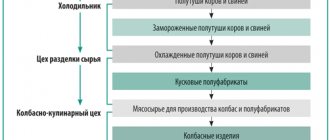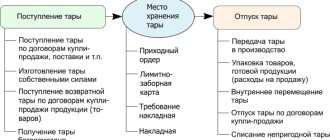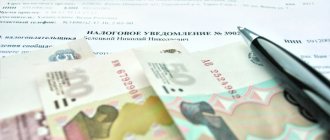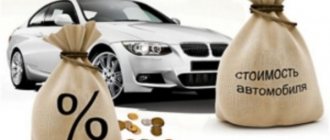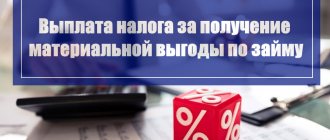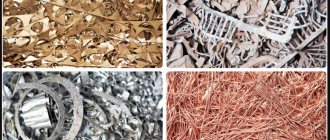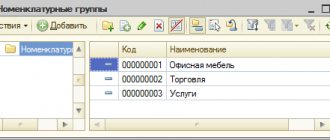Initially, the list of discounted publications was approved by Decree of the Government of the Russian Federation dated January 23, 2003 No. 41, which was amended more than five times.
The preferential VAT rate of 10% can only be used by publishers of periodicals and books related to education, science and culture.
Reduced VAT does not apply to publications of an advertising and erotic nature.
Previously on the topic:
For what reasons will the declaration not be accepted in 2021, but the “camera chamber” will be conducted more thoroughly?
Publications of an advertising nature include publications in which advertising or promotional information constitutes more than 45 percent of the volume of one issue of the publication.
The right to a reduced VAT of 10% is confirmed by a Certificate issued by the Federal Agency for Press and Mass Communications.
Based on the Certificate, both the publishers themselves and all distributors participating in the sales chain have the right to apply 10% VAT on the sale of publications.
Publishers that apply 10% VAT must independently apply for a certificate from the Federal Agency for Press and Mass Communications. Samples of publications must be provided along with the request for a certificate.
What has been added to the list of publications subject to 10% VAT?
Electronic books have been added to the list of periodicals and book products related to education, science and culture, subject to VAT at a rate of 10 percent. Namely, book products in electronic form, including in audio format, distributed, in particular, on magnetic media, on the Internet, via satellite communication channels:
- books on disks, tapes or other physical media 11/58/20,
- e-books 11/58/30.
OKPD code 2 - 58.11.30.190 - books, brochures, other printed leaflets and similar materials in electronic form has been replaced by 58.14.20 - electronic magazines and periodicals.
Be careful with reporting:
Penalty for explanations to the VAT return not in the established format: innovations for 2021
VAT rate on sales of book products
Theoretically, the right to a preferential rate of 10% does not depend on the availability of a certificate, which is provided for in List No. 41. The certificate does not give its addressee the right to a preferential VAT rate, but only confirms the type and nature of the printed publication .
But in practice, applying a 10% rate without this certificate will lead to a dispute with the tax office. So, when asked what rate is taxed on the sale of book products purchased from other publishing houses, the inspectors answered that “to confirm the legality of applying the 10% VAT rate, it is necessary to submit a document that confirms that the type of printed product produced actually corresponds to the one indicated in the List. Such a document is a certificate issued by the Federal Agency for Press and Mass Communications” (letter of the Federal Tax Service of the Russian Federation for Moscow dated January 30, 2009 No. 19-11/007398).
Moscow tax authorities have repeatedly said that in the absence of a certificate, a tax rate of 18% should be applied (Letters of the Federal Tax Service of the Russian Federation for Moscow dated April 29, 2009 No. 16-15/042432 and dated October 20, 2004 No. 24-11/68947).
The Russian Ministry of Finance indicated that the VAT rate of 10 percent “is applied provided that Rospechat has issued the appropriate certificate” (Letter of the Ministry of Finance of the Russian Federation dated November 22, 2011 No. 03-07-14/113).
The outcome of a tax dispute is difficult to predict. The position of the courts is ambiguous. The FAS Moscow District did not support the inspectors. The judges indicated that “the absence in the case materials of a certificate issued by the Federal Agency for Press and Mass Communications cannot be a basis for changing the VAT rate established by tax legislation at its discretion” (Resolution dated December 29, 2008 No. KA-A40/12491-08 on case No. A40-3016/08-126-13). And that “a certificate from the Federal Agency for Press and Mass Communications is not a document giving its addressee the right to apply a preferential VAT rate, but only a document confirming the type and nature of the publication” (Resolution of the Federal Antimonopoly Service of the Moscow District dated September 26, 2007, October 2, 2007 on the case No. KA-A40/10055-07).
However, the FAS of the East Siberian District in its Resolution dated June 30, 2006 in case No. A19-28405/04-33-F02-3027/06-S1 concluded that the application of the 10 percent rate was unjustified, since the taxpayer “did not submit the above-mentioned certificate.” This position was also supported by the Federal Antimonopoly Service of the North-Western District in Resolution No. A56-27146/2006 dated 10/09/2007.
The Federal Antimonopoly Service of the West Siberian District in Resolution No. F04-8155/2006 dated December 6, 2006 (29040-A45-25 in case No. A45-6495/06-40/221) indicated “that in order to confirm the legality of applying the VAT rate of 10%, it is necessary to have a document , which would confirm that the type of printed product produced actually corresponds to that specified in the list." But the taxpayer "did not fully fulfill his obligation to submit all documents giving the right to apply a tax rate of 10%."
Get expert advice
according to your situation and get expert advice.
Ask a Question
Ask a Question
VAT declaration
Starting with reporting for the fourth quarter of 2021, which must be submitted to the tax office before January 25, new requirements will be imposed on the procedure for filling out a VAT return (see more details New forms of VAT and property tax returns)
In 2021, we should expect new changes when filling out the declaration; this will be related to the introduction of a mechanism for traceability of imported goods.
It is planned that the changes will affect reporting starting from the third quarter of 2021 .
List of goods at the rate of 10% VAT
Since the adoption of Decree of the Government of the Russian Federation No. 908, the list of goods with VAT of 10 percent has been repeatedly changed and expanded. The latest changes currently in effect are effective April 1, 2021. All grocery products and children's products in the list are grouped in accordance with OKP2 values, which simplifies the search and selection of the desired items.
For each item, several product groups are presented at once, allowing you to accurately identify the product. For example, in the “Sugar” section, 7 items of this food product are indicated at once (raw beet or cane sugar, white beet sugar, etc.). In the example above, each of the 7 positions has its own identifier OKP2. For example, raw beet or cane sugar is identified by the OKP 10.81.11 indicator, which must be indicated in tax returns. Similar identifiers can be selected according to the Commodity Nomenclature of Foreign Economic Activity if you are importing sugar into the territory of the EAEU.
Products subject to preferential taxation also include meat, dairy products, vegetables, seafood, cereals, and other food products. The list of products for children includes knitwear, mattresses, beds, stationery, strollers, and other product groups.
If the supplied goods have clearly defined properties and can be unambiguously correlated with a specific position in the OKP classifier, there will be no problems with selecting codes and indicating them in the declaration. However, for many product groups it is difficult to do this on your own, since external signs may be the same for adjacent OKP positions. In this case, you can contact our specialists to confirm 10% VAT.
The tax is out of print
Rospechat expects an increase in reading activity among “the younger generation, whose representatives, on the one hand, read less than older representatives (unless, of course, we consider reading as part of the educational process), and on the other hand, are to a greater extent consumers of electronic content,” the department’s press service told Rossiyskaya Gazeta. As a result, the market volume should also increase.
The pandemic has doubled the number of people reading in Russia
Reading activity has already increased amid the pandemic: while last year 38.7% said they read at least something, this year the share has increased to 67.9%, according to data from Ipsos and Rosindex (people older than 16 years in cities with a population of more than 100 thousand people). On mobile platforms, sales of e-books jumped by 68-90%, subscriptions are gaining popularity, while people who rarely read are more willing to listen to audiobooks.
In 2015-2019, a resident of Russia read on average three paper books a year and only every seventh read at least one e-book. In the USA, this figure is 12 paper books and 1.3 e-books per person, as indicated in the explanatory note of the Ministry of Telecom and Mass Communications to the draft resolution of the Russian government. Reducing or eliminating VAT increases the consumption of literature in general and textbooks, since the market is extremely price sensitive. Thus, in Sweden in 2002, reducing the VAT rate from 25% to 6% increased sales by 20% in a year and a half, while Poland, having increased the rate from zero to 5%, saw a drop in sales by 5%.
However, reading is a relative concept. An e-book is more convenient than a paper one, but due to its format it competes with video, music and social networks and does not always win. The capacity of the electronic and audiobook market in Russia last year amounted to 6.5 billion rubles, or 10% of the entire market (excluding educational literature), growth was at 35%. This year, the Liters platform expects less growth - 31%. Apparently, a certain percentage of people have been consumed by reading news related to quarantine and coronavirus.
In half of the world's countries, the VAT rate on printed and e-books is the same, about a third of countries have zeroed out the rate on electronic versions, and the same proportion have zeroed out VAT on both paper and e-books, according to a 2018 report by the International Publishers Association (IPA). Almost all of Latin America lives with zero rates. In 2018, the European Council also allowed the use of a reduced VAT rate on electronic books, since in some countries the number of electronic versions sold reached or exceeded the number of paper counterparts. Audiobooks in most EU countries are subject to VAT at the same rate as printed books - probably due to production and copyright laws.
To support the knowledge economy, encourage reading and promote lifelong learning, the IPA recommends a zero VAT rate for all books, regardless of their format or delivery method. Among the arguments in favor are a direct impact on the price of production and strengthening the position of national book publishing, as a result - the preservation of jobs and the viability of small and medium-sized companies. Of course, the Russian book industry has been wanting the same thing for quite some time, “and Rospechat as a whole treats this idea with understanding,” the agency’s press service told RG.
Example of applying the VAT rate of 10%
The organization Igrushka-Market-Plus LLC is engaged in the sale of children's goods and, in particular, soft toys. On July 27, 2021, this company signed an agreement with, and on July 28, 2021, it sold a batch of goods. The shipment amounted to 765 thousand rubles. It is necessary to calculate the amount of value added tax that should be paid to the budget of the Russian Federation.
According to the provisions of subparagraph 2 of paragraph 2 of Article 164 of the Tax Code of the Russian Federation, toys belong to the category of goods for children, which are taxed at a VAT rate of 10%.
The tax base in this case is the cost of toys, equal to 765 thousand rubles. VAT can be calculated as follows:
- VAT=RUB 765,000* 10% / 110% = RUB 69,545.45
As a result of the calculations, the total cost of toys including value added tax will be 834,545.5 rubles (765,000 rubles + 69,545.45 rubles). Igrushka-Market-Plus LLC issues this amount to the buyer. The company also issues an invoice in which you can see in detail the list of sales of goods at a rate of 10% VAT. This invoice gives the right to request a deduction from the budget in the amount of 69,545.45 rubles.
Advertising products costing less than 100 rubles. for a unit
In most cases, if the taxpayer distributes just such products, there is no need to get involved in a fundamental dispute with regulatory authorities. The Tax Code of the Russian Federation provides a benefit, exempting from VAT transactions for the transfer of goods (work, services) for advertising purposes, the cost of acquiring (creating) a unit of which does not exceed 100 rubles. (Clause 25, Clause 3, Article 149 of the Tax Code of the Russian Federation). “Input” VAT on goods (works, services) used in carrying out VAT-free transactions is not accepted for deduction. The tax is taken into account in accordance with paragraphs. 1 item 2 art. 170 of the Tax Code of the Russian Federation in the cost of these goods (works, services). Consequently, in the general case, the taxpayer does not have the right to deduct tax related to the cost of freely distributed goods (work, services) that fall under the benefit. However, there is another rule of tax law that can help in this situation. This is para. 9 clause 4 art. 170 Tax Code of the Russian Federation. It refers to the so-called 5% rule, according to which the taxpayer has the right not to apply the provisions of the same paragraph 4 of Art. 170 of the Tax Code of the Russian Federation on separate accounting in those tax periods when the share of total expenses for operations, the implementation of which is not subject to taxation, does not exceed 5% of the total amount of total expenses for all types of activities.
Note! The advertising expenses under consideration can be incurred by all types of enterprises - both manufacturing and retail. At the same time, from a formal reading of the rule on the 5% barrier, it follows that it applies only to taxpayers engaged in the production of goods (work, services) and property rights. Can taxpayers who carry out only trade transactions take advantage of this provision? Based on one of the general principles of taxation - the principle of equality (which does not allow differences in the conditions of taxation of different categories of taxpayers on non-economic grounds), the procedure for applying the 5% barrier should apply to all taxpayers without exception, regardless of the types of activities in which they are engaged. This understanding of this norm of the Tax Code of the Russian Federation has long been confirmed by the tax authorities. Thus, even in paragraph 43 of the canceled Methodological Recommendations on the application of Chapter 21 “Value Added Tax” of the Tax Code of the Russian Federation, approved. Order of the Ministry of Taxes and Taxes of Russia dated December 20, 2000 N BG-3-03/447 stated that this special procedure applies not only to the production of goods (works, services), but also when taxpayers conduct trading activities. The Ministry of Finance of Russia in Letters dated January 29, 2008 N 03-07-11/37 and dated December 7, 2010 N 03-07-11/475 also agreed that this norm can also be applied by trading enterprises.
Let us note that all tax amounts presented to such taxpayers by sellers of goods (work, services) used in production, property rights in the specified tax period are subject to deduction in accordance with the procedure provided for in Art. 172 of the Tax Code of the Russian Federation. Consequently, if the share of expenses on such “low-value” advertising during the tax period is insignificant (more precisely, if they do not exceed 5% of the total total expenses incurred by the taxpayer for a given period), then there is no need to keep separate records of transactions and the entire “input” » VAT can be deducted. If, at the same time, the taxpayer has other operations, the implementation of which is not subject to taxation, then 5% should be determined based on the totality of such operations. The calculation can be made as follows (see table).
Table
Calculation of the share of expenses for low-value advertising and other VAT-exempt transactions
| Taxable period | The amount of expenses in the form of advertising materials excluding VAT + expenses for other non-taxable transactions | The total amount of expenses (data from pages 020 and 030 of form N 2) | Share of expenses for low-value advertising and other non-taxable transactions in the total amount of expenses |
| I quarter | |||
| II quarter | |||
| III quarter | |||
| VI quarter |
Thus, if the taxpayer does not exceed the 5% barrier, then he has legal grounds to take into account all amounts of “input” VAT as part of tax deductions, incl. on “low-value” advertising materials, the distribution of which, according to officials, is a preferential (VAT-free) sale.


